API Testing Building Blocks
These are the available building blocks for API testing.
- Import REST
- Import SOAP
- REST Request
- SOAP Request
- Validation
- For Each
- Condition
- Data File
- SQL
- Proxy
- OCR Block
- Global Parameters
- Include
- Locker
- JavaScript
Import REST

REST = REpresentational State Transfer
This block allows the user to perform a REST import, the interface will look like this:
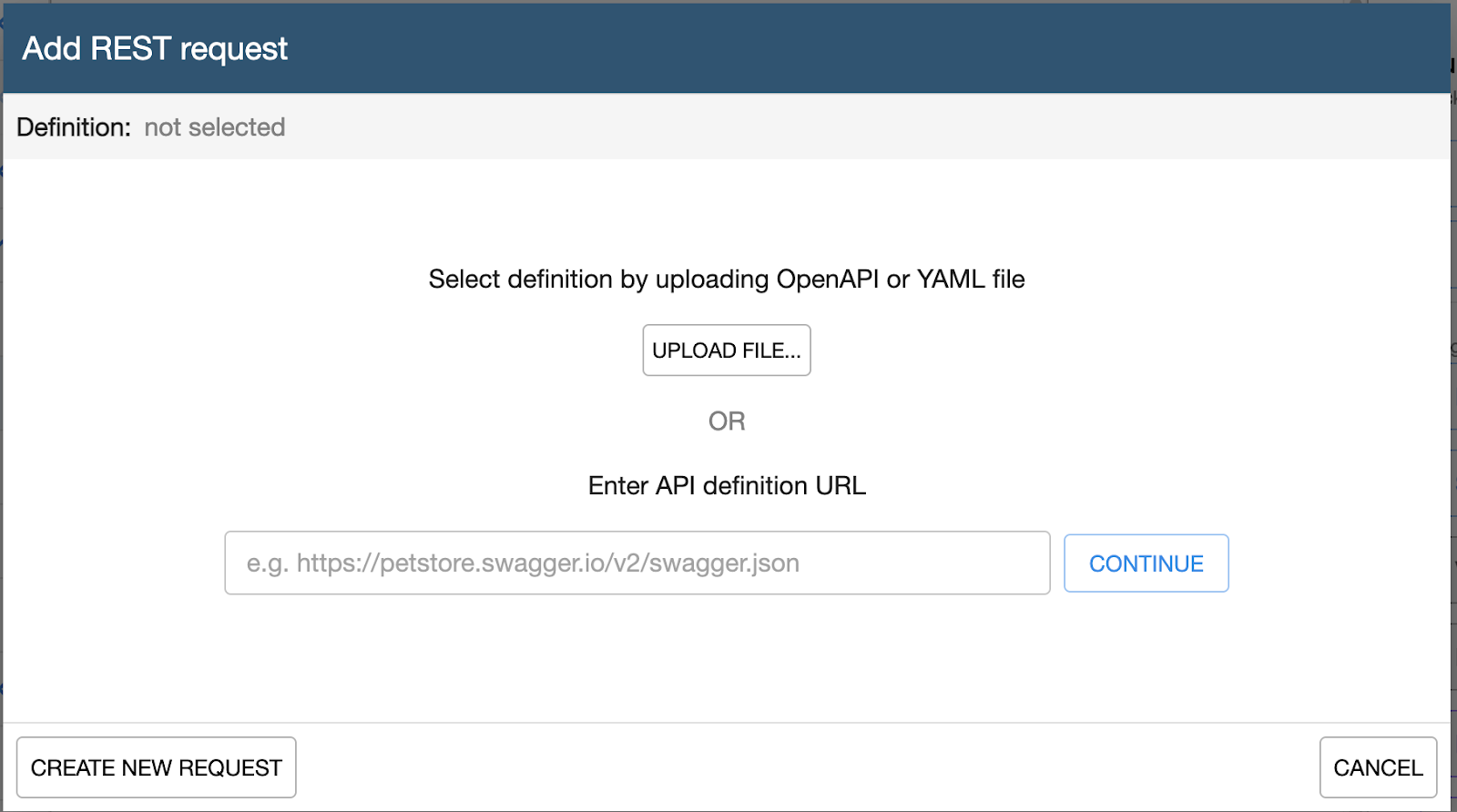
Actions
-
GET
-
POST
-
PUT
-
DELETE
Authentication
-
No authentication
-
Basic Authentication
-
Bearer Token
-
OAuth 2.0 Client Credentials
Import SOAP

SOAP = Simple Object Access Protocol
This Block allows the user to perform a SOAP import, the interface will look like this:
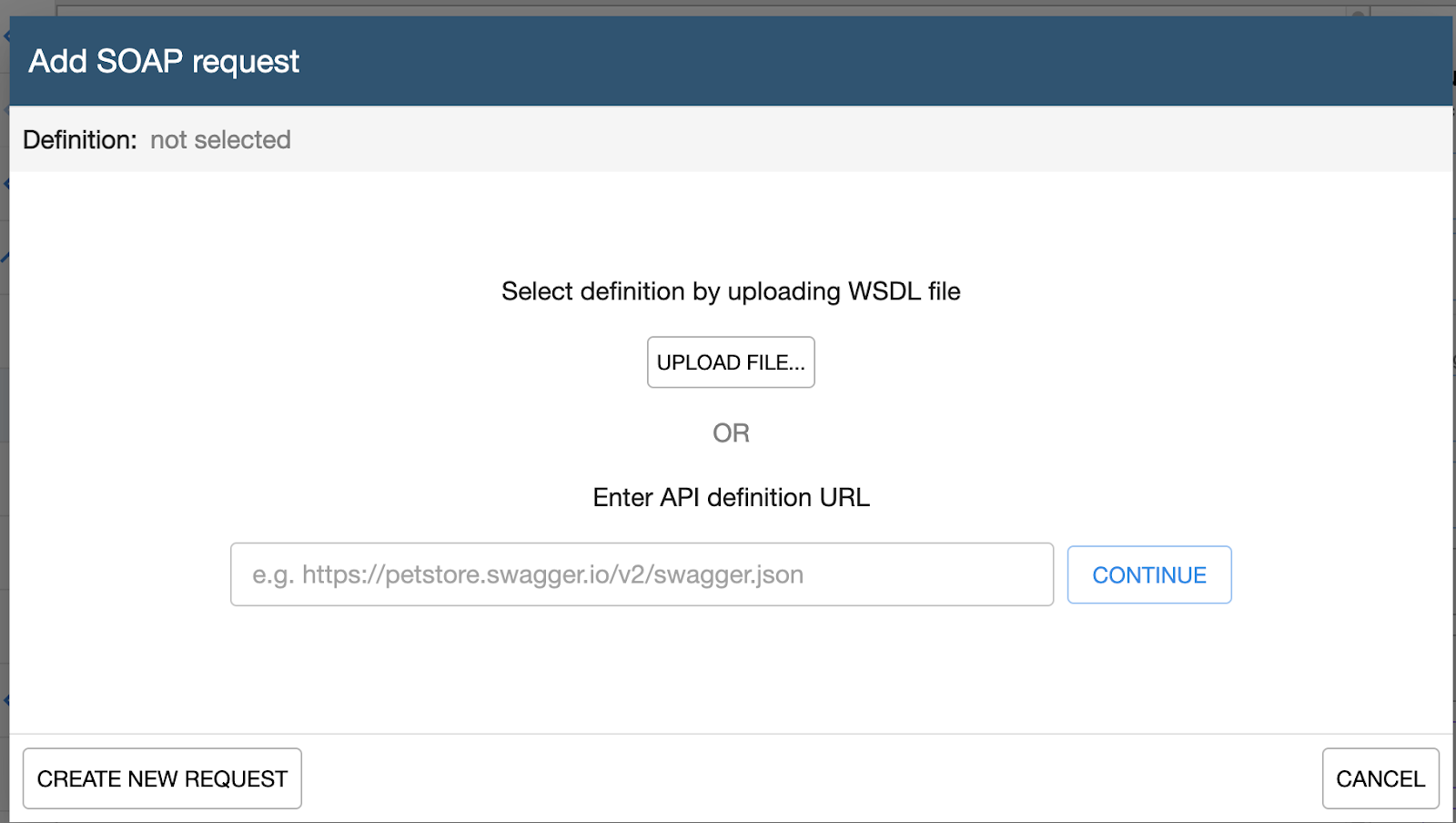
REST Request

You must drag this block into the workspace.
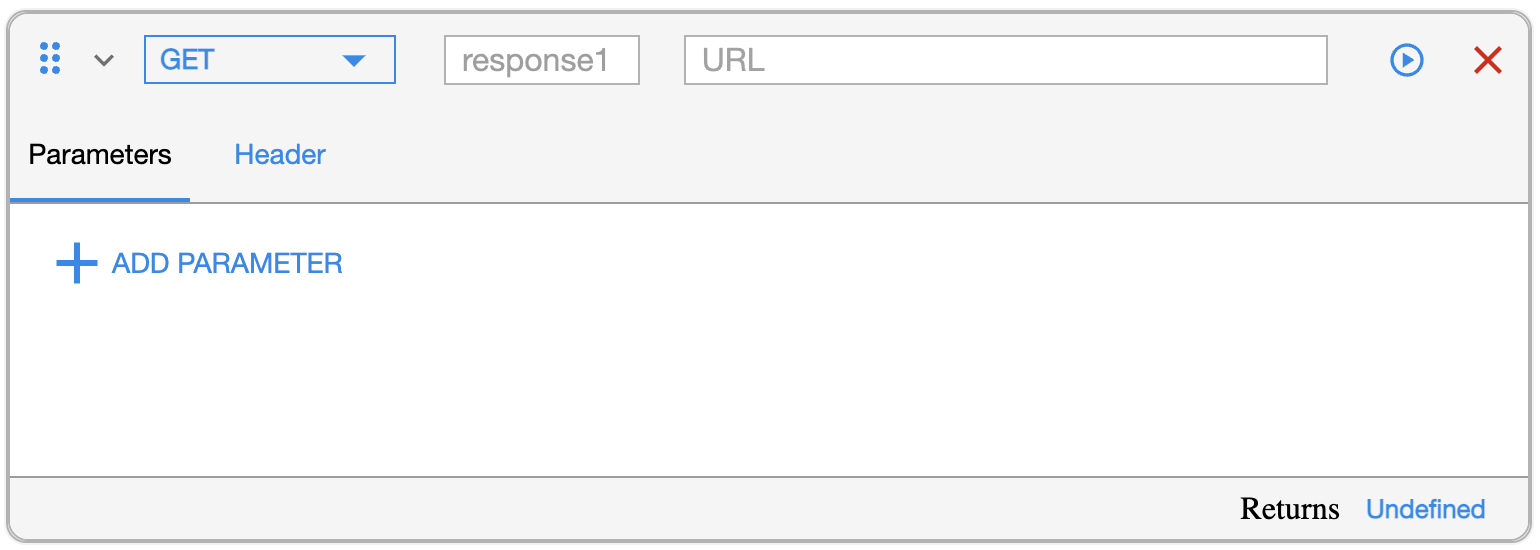
SOAP Request
REST = REpresentational State Transfer
SOAP = Simple Object Access Protocol

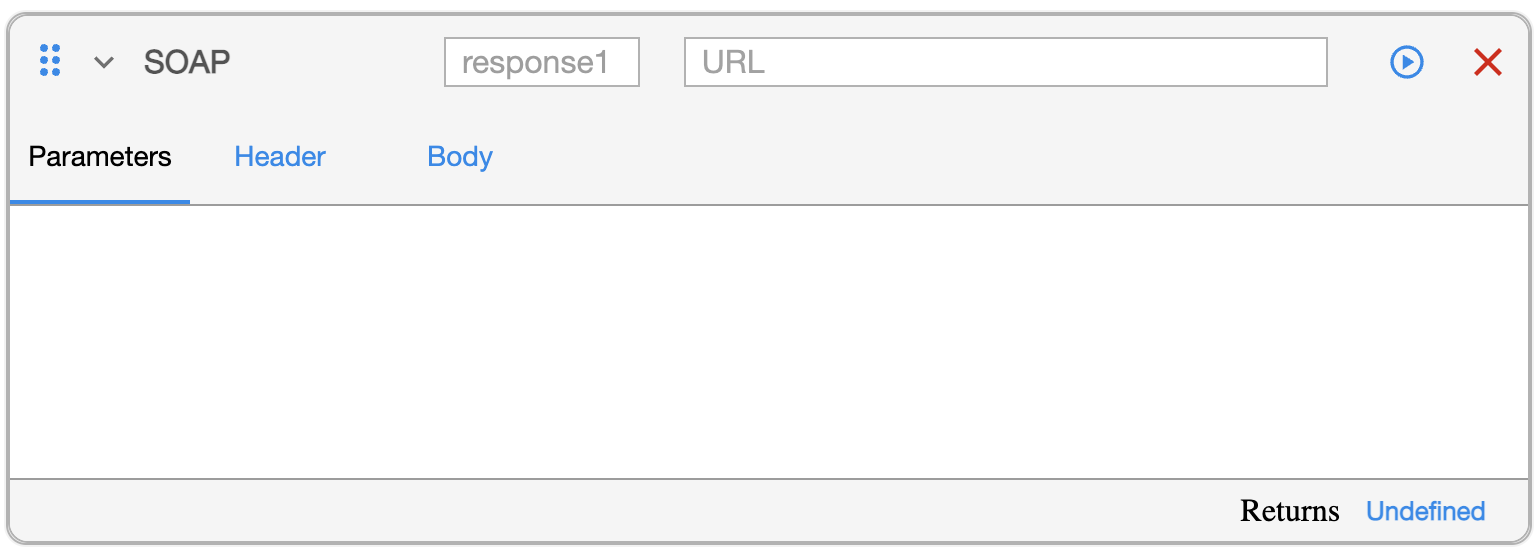
Validation

The VALIDATION block is used to verify that the output corresponds to what is expected.

The components of the VALIDATION block are:
-
An expression or value to validate
-
An operator
-
A datatype
Validation parameter 1:
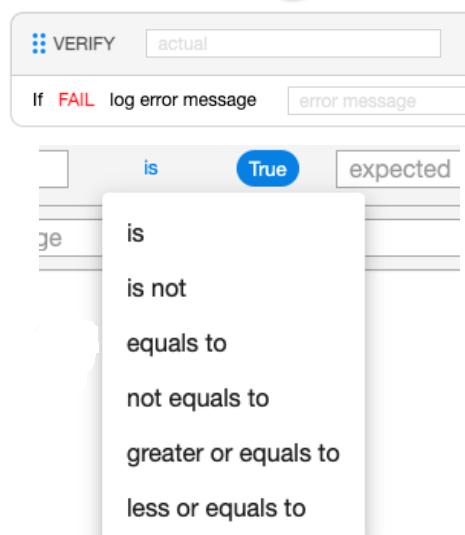
Validation parameter 2:

For Each

The FOR EACH block allows you to perform loops (similar to “Do While”). FOR EACH can be nested.
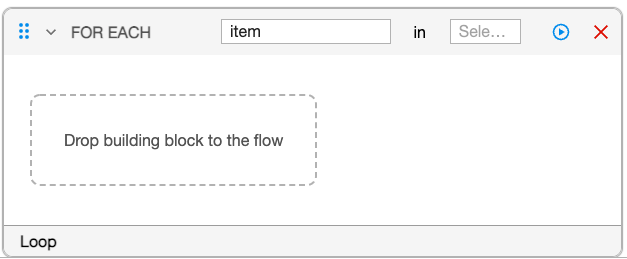
Parameters:
-
Item
-
Select Object contains the object returned by the REST or SOAP request.
Condition

The CONDITION block functions as a decision point (IF / THEN / ELSE).
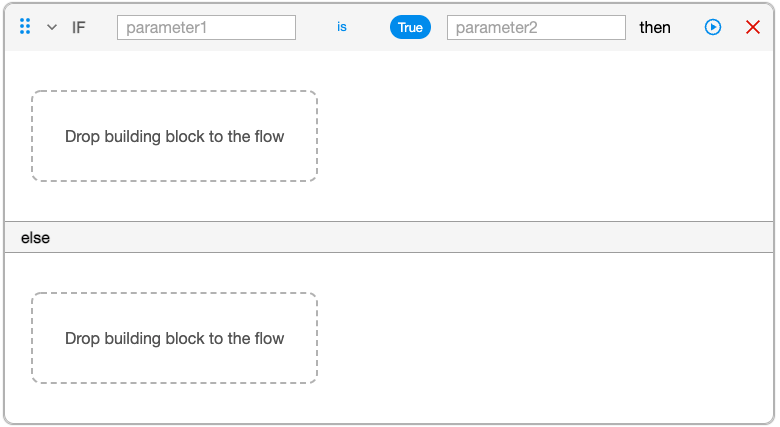
Parameters:
-
Expression or variable to be evaluated. Normally this comes from the REST REQUEST block.
-
Comparison operator
-
An expression to compare to
Data File

The DATA FILE block can be used when you are required to get any parameters needed for your test from DPL/Text file.
This block will help the user to read values from a file (CSV format and others) and use them as dynamic parameters in the REQUEST BLOCKS

Parameters:
-
File name
SQL

The SQL block allows you to retrieve data from a database in order to be used as parameters. This block will helps the user to read values from a RDB and provide
them as parameters for REQUEST BLOCKS

Depending on the particular needs of the testing, there will be 3 options:
-
No Data: You have to provide the parameters and the values for the URL
-
SQL: The data will come from a SQL file
-
CSV: the data will be coming from the CSV file DPL.
Proxy
You can configure proxy information as part of your API testing.
This building block was added in the 5.0.0 release of AIQ.
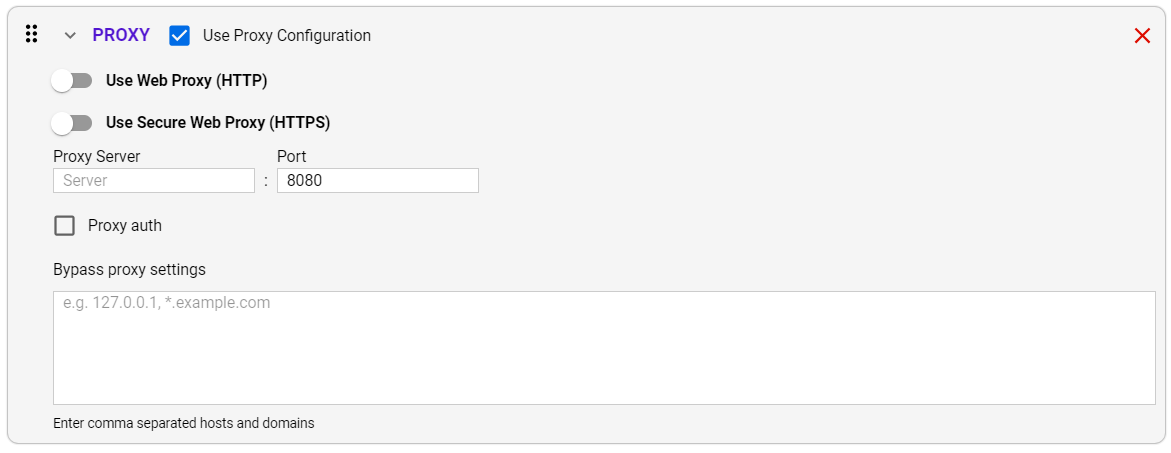
-
Use Web Proxy (HTTP)
-
Use Secure Web Proxy (HTTPS)
-
Proxy Server
-
Port
-
Proxy Auth
-
Bypass Proxy Settings
OCR Block
You can add an Optical Character Recognition (OCR) block to your test.
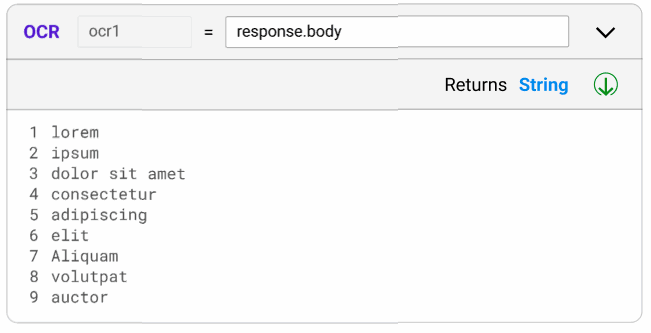
-
Default name:
ocr1 -
Has one input, accepts body from previous responses
-
When it is empty is shows the hint “Image”
-
Returns string of characters, recognized text separated by a newline character
This was added in the 5.2.0 release of AIQ.
Global Parameters
This is used as a Global Header. In each block you can add one or more headers that will be added to each subsequent request blocks.


This was added in the 5.2.0 release of AIQ.
Include
You can include files with your API test.

This was added in the 5.2.0 release of AIQ.
Locker
You now have the option to store the values of the results in a locker. This can be extremely useful if you are creating scripts in one of the AIQ Designers or Services Workbench, to allow you to store the data in the locker and reuse it in any script.

-
Whiteboard
-
Parameter
-
Key
-
Value
-
This was added in the 5.2.0 release of AIQ.
JavaScript
Allow you to include JavaScript in your API test.

This was added in the 5.2.0 release of AIQ.